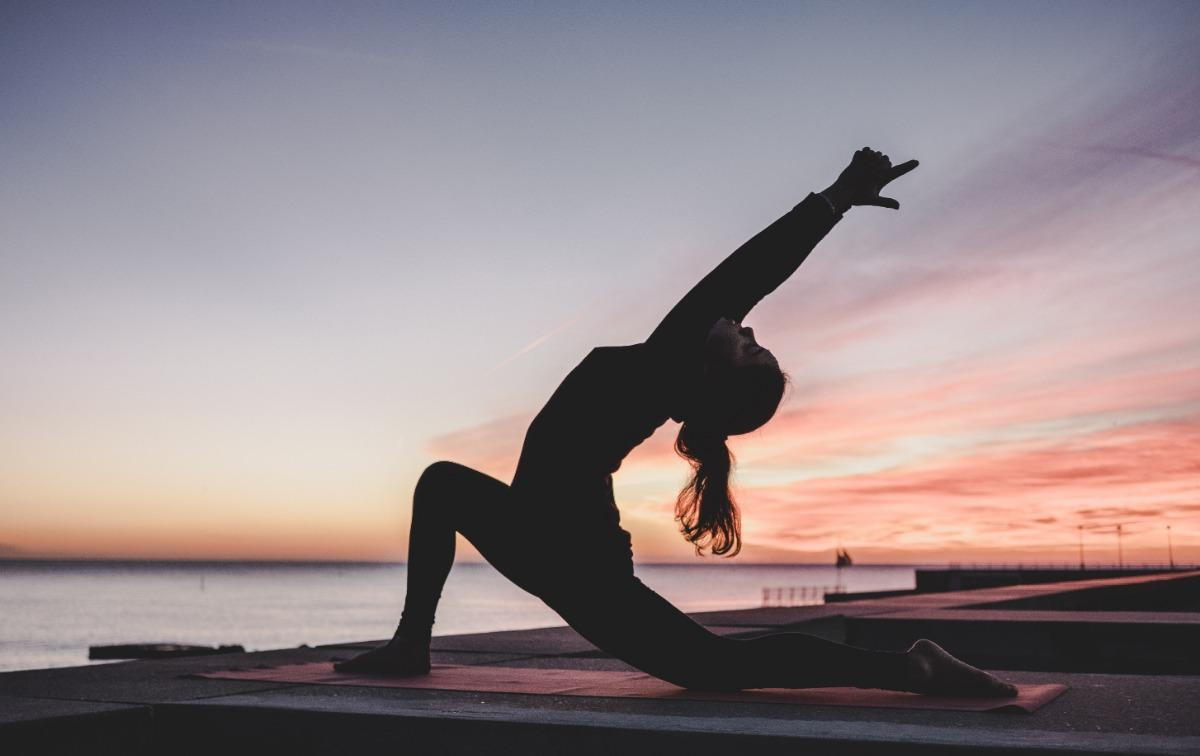How Yoga Helps Heal Trauma and Reduce Anxiety

- posted: Jul. 26, 2019
If you’re going through a difficult time in life, consider starting, returning to, or increasing yoga sessions. If you’ve taken a traditional yoga class before, you’ve probably noticed immediate benefits from yoga after the class, such as increased flexibility, more calm and relaxation, better posture and a better mood.
Personally, my improved energy and mood after yoga is what has kept me coming back for more than 14 years. And while I knew it was beneficial for strengthening my mind and body, I never thought of it as a clinical intervention tool for reducing anxiety.
It’s not a coincidence that yoga makes us feel better. Science is catching up with why yoga is so helpful for people struggling with trauma, anxiety, stress, and depression. [1]
What Is Trauma?
Trauma is a heavy word that sometimes gets tossed around lightly. Traumas are distressing experiences that can be little or big, and we all experience them. Anxiety is a component that typically accompanies trauma. For anyone who has experienced any type of trauma, it may be helpful to remember that the anxiety you are feeling is simply your body trying to protect you.
If you're struggling with a recent traumatic experience or your anxiety is interfering with your daily routines, EMDR therapy may help you. I specialize in Eye Movement Desensitization and Reprocessing (EMDR) therapy, which is an evidence-based treatment method for working through trauma and anxiety, among other mental health conditions.
Think about the last time you were anxious. What feelings and sensations did you notice? Chances are your anxiety included some combination of physiological sensations in your body, such as:
- Sweating
- Feeling dizzy or faint
- Chest discomfort
- Trembling
- Heart palpitations or increased heart rate
- Nausea
- Rapid breathing or hyperventilation
- Nervousness or tense
- Gastrointestinal distress, such as gas, bloating, constipation or diarrhea
All of these sensations are governed by your autonomic nervous system and are involuntary. Anxiety literally revs your body up to prepare for the looming threat (real or imagined) that it perceives. This also floods your body with stress hormones that, while beneficial in short bursts, quickly become toxic and harmful if left on long-term.
So if we want to reduce the anxiety that often is an element of trauma, we need to calm the body down.
One of the best ways to calm the body down is through controlled breathing. Breath work happens to be a core component of yoga philosophy. One of the main goals of yoga is to connect breath to movement in different poses.
Why Breath Work or Controlled Breathing Is Such a Powerful Tool
Our breathing is controlled by both the autonomic nervous system and the voluntary nervous system. We don’t think about breathing – we do it automatically (involuntarily). However, we can focus our attention on breathing and change the pace of it (voluntary). [2] It is very common for people who have experienced trauma to be shallow breathers.
In a well-facilitated yoga class or technique, we are encouraged to focus on our breath. Yoga helps us learn to focus the mind and redirect our attention on the breath and the physical sensations in our bodies. Being in tune with our feelings is an important key to emotional regulation, a skill that helps all of us interact with ourselves and one other in kinder, more respectful manners.
Try This: “Reset to Calm” Breath Work
The next time you are feeling anxious, stressed or overwhelmed, try this simple yoga-inspired breathing technique:
- Sit in a comfortable, upright position with eyes closed so you can focus more on your internal experience.
- Place your hands on your belly. Take a slow, deep breath in through your nose and blow it out as if you were slowly blowing out a candle.
- Breathe in through your nose again. Notice where your breath is coming from. Hopefully, it’s coming from the diaphragm, or belly. You should be able to feel your belly rise and expand. That’s deep breathing as opposed to shallow chest breathing.
- Continue this cycle for at least five rounds of breaths.
- When you finish, pause and reflect: What did you notice? How do you feel?
What was your experience like? Do you use other breathing techniques or yoga poses to reduce stress and anxiety?
References:
1. "The Effects of Yoga on Stress, Anxiety, and Depression in Women" https://www.ncbi.nlm.nih.gov/pmc/articles/PMC5843960/
2. “Simple Yoga Techniques as Clinical interventions for Anxiety and Trauma” by Mary NerrieStearns, MSW, LCSW, RYT
Location
Where to Reach Me
261 W. Johnstown Road, Suite 215
Gahanna, Ohio, United States